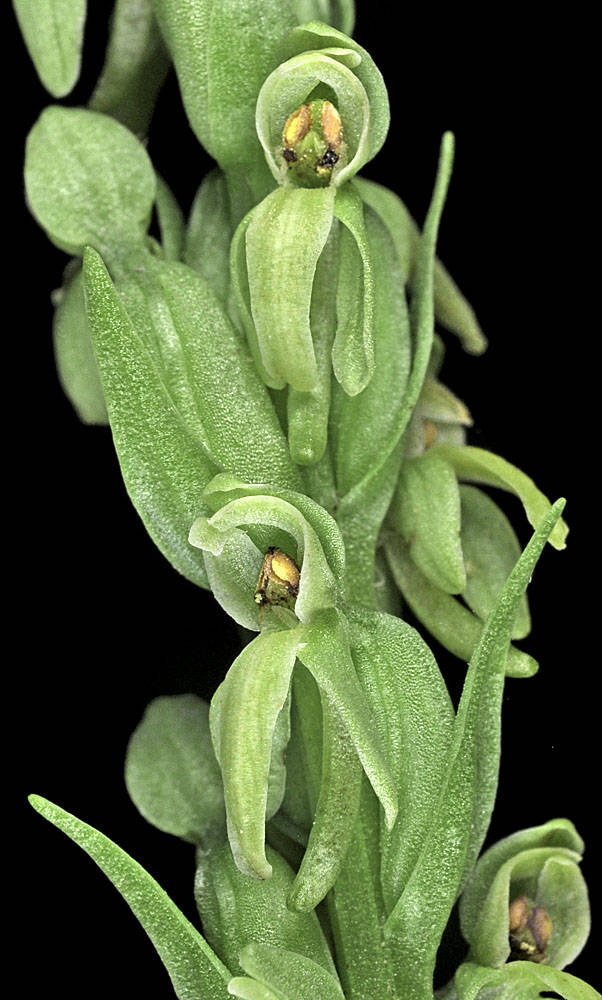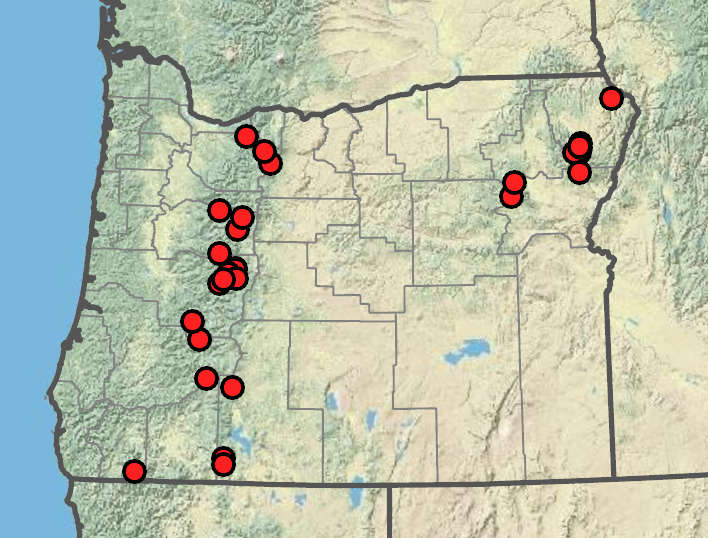Platanthera huronensis
green bog orchid
20–65 cm tall.
cauline, 2–4, oblong to linear-lanceolate, 10–18 × 1–2 cm; lower leaves clasping stem; upper leaves becoming bracts within the inflorescence, green through anthesis.
densely to loosely 20–60-flowered.
more or less spreading, green to whitish green;
petals often lighter than sepals;
dorsal sepal ovate, 3–7 × 2–4 mm;
lateral sepals ellipticlanceolate and oblique, 3–9 × 1–3.5 mm, spreading to reflexed;
petals ovate-lanceolate; sickle-shaped, 3–8 × 1.5–4 mm;
lip elliptic to lanceolate whitish green, basally dilated, 5–12 × 2–4 mm, descending or the apex caught in the tip of the converging dorsal sepal and petals;
spur cylindrical and tapering; more or less equal in length to lip, 4–12 mm.
Platanthera huronensis
Wet meadows, roadside ditches, stream sides, fens, seeps, springs. Flowering Jun–Aug. 100–2000 m. BW. Throughout northern North America. Native.
Platanthera huronensis can be difficult to differentiate from P. aquilonis, especially in dried, pressed examples (see P. aquilonis).
James Riser
- Local floras:
BC,
OR,
WA
- Local Web sites:
Flora NW,
PNW Herbaria
WildflowerSearch
iNaturalist (observations)
USDA Plants Database
- LBJ Wildflower Center
- SEINet
- Plants of the World Online
- Encyclopedia of Life
- Wikipedia
- Google Image Search



